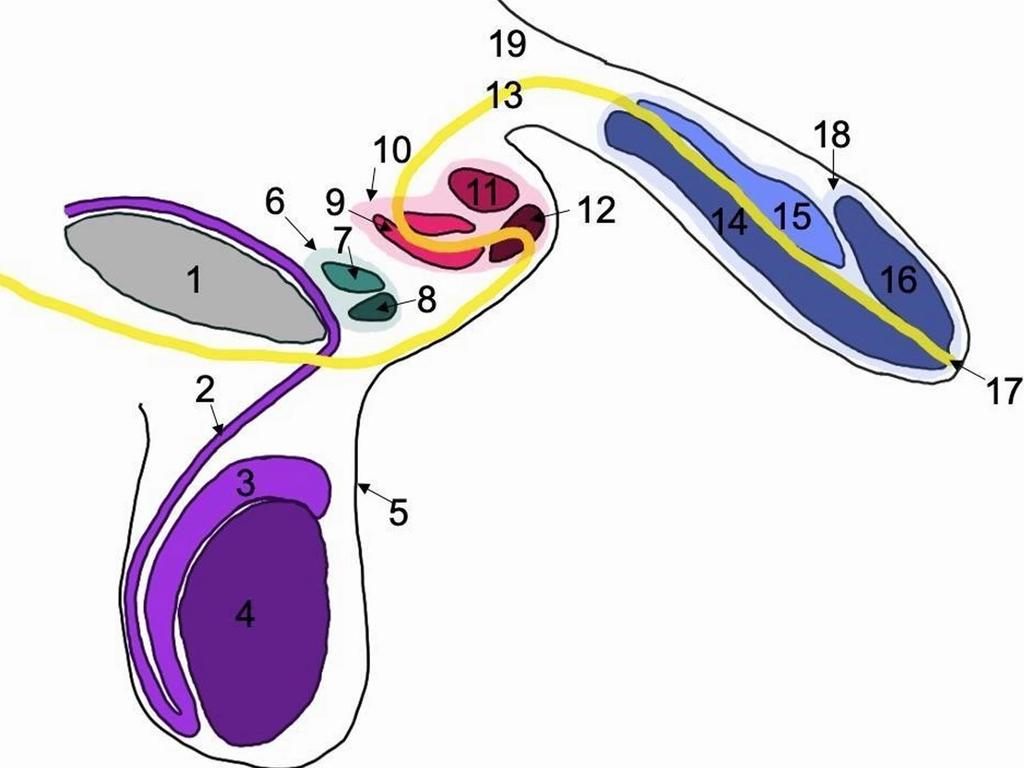Researchers discover man with three penises
A man with three penises has been discovered in only the second ever documented case of the ultra-rare birth defect.
A man with three penises has been discovered in only the second ever documented case of the ultra-rare birth defect.
Student researchers at the University of Birmingham Medical School in the UK made the “serendipitous discovery” while dissecting the donated body of a 78-year-old man — who may have gone his whole life without being aware of his “remarkable anatomical variation”.
Duplicate penises, or diphallia, is an extremely rare congenital anomaly thought to affect one in every five to six million people, with only around 100 cases reported in the medical literature.
“Triphallia, a rare congenital anomaly describing the presence of three distinct penile shafts, has been reported only once in the literature,” the authors wrote in the Journal of Medical Case Reports this month.
“These penile morphological abnormalities may not have been identified during his life. However, he may have lived with functional deficits due to the abnormal anatomy of the region, which may include urinary tract infections, erectile dysfunction or fertility issues.”
The paper represents the first time the internal anatomy of the birth defect has been described in detail through post-mortem dissection — the first ever case of triphallia, documented in 2020, was in a newborn baby.
The patient, a white male around six feet tall, appeared to have normal genitalia on external examination, but dissection revealed “two small supernumerary penises … concealed within the scrotal sac”.
The primary and secondary penis shared a urethra, which “coursed through the secondary penis prior to its passage through the primary penis”.

“A urethra-like structure was absent from the smallest supernumerary penis,” the authors wrote.
In the womb, the early phase of genital development occurs at four to seven weeks gestation.
“The penis develops from the genital tubercule and is controlled by dihydrotestosterone (DHT),” they explained.
“Genetic abnormalities affecting the expression of androgen receptors may cause morphological genital abnormalities. In this case, there may have been triplication of the genital tubercle. The urethra originally developed in the secondary penis, however, when this penis failed to develop, the urethra diverted its course and developed in the primary penis instead. The tertiary penis is a remnant of the triplicated genital tubercle.”
The researchers noted that phenotypic differences between extra penises reported in the medical literature “varied dramatically, potentially due to the wide range of pathophysiological causes”.
In almost all cases of external penile duplication, which was typically associated with other congenital abnormalities, surgeons decided to remove the additional penis.
Internal penile duplication, however, was typically identified later in life with “sexual dysfunction, obstructive urinary symptoms and urinary incontinence in adulthood”.
“We cannot be certain that in this case the defect remained unnoticed in life, as there is a history of inguinal hernia repair,” they wrote.
“Due to the tortuous nature of the urethra, a urinary catheter would have proved challenging to pass. If the defect had been noticed during his life it may have simply been left untouched due to the apparent lack of symptoms and its benign nature.”
Given the accidental nature of the discovery, they suggested internal penile duplication may be more common than previously thought.
“Without any symptoms and additional medical needs, concealed internal penises may not present themselves, preventing diagnosis,” they wrote.
“Hence, polyphallia may be more prevalent than currently understood. It is of clinical importance for healthcare providers to be aware of polyphallia for the diagnosis of patients presenting with urological symptoms and for healthcare interventions, such as simple catheter insertion, urological imaging and surgery.”






